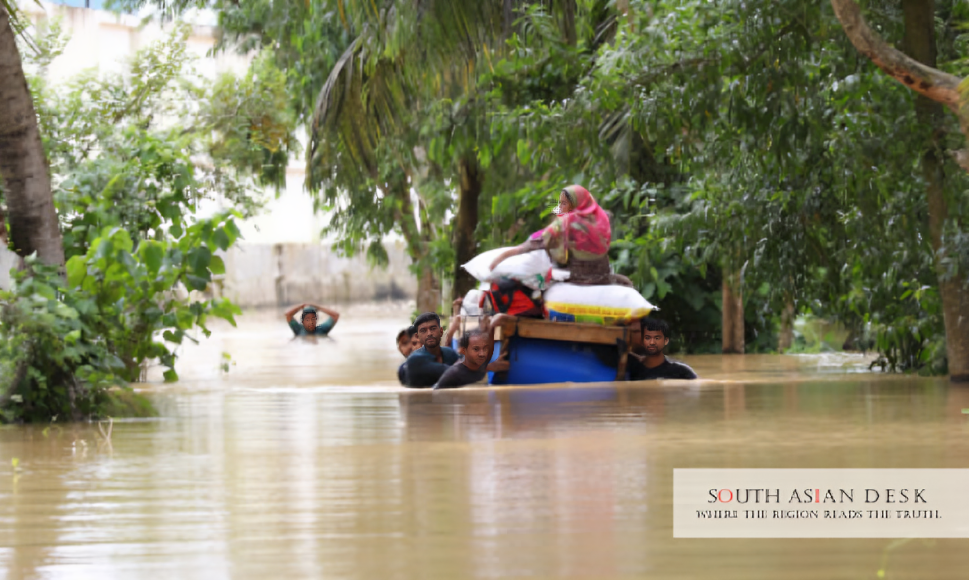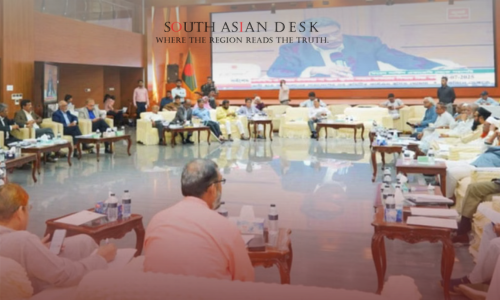Bangladesh submitted its third Nationally Determined Contribution (NDC 3.0) to the UNFCCC in September 2025, pledging a 20.31 per cent cut in greenhouse gas emissions by 2035 from business-as-usual levels, as the nation gears up to attend COP30 in Brazil next month. The Ministry of Environment, Forest and Climate Change led the effort, targeting sectors like energy and agriculture amid rising climate threats. This move responds to the Paris Agreement’s call for updated commitments, with implementation starting January 2026.
Why Bangladesh Heads to COP30 Matters for South Asia
Bangladesh heads to COP30 not just as a participant but as a frontline voice for South Asia’s 1.9 billion people facing shared perils like floods and heatwaves. The region’s economies, reliant on agriculture and coasts, stand to lose trillions in GDP by 2100 without action. Bangladesh NDC submission COP30 sets a benchmark for neighbours like India and Pakistan, pushing for equitable finance from developed countries. It highlights the need for collective bargaining on loss and damage funds, vital as cyclones batter the Bay of Bengal annually. This submission amplifies calls for technology transfers, fostering resilience across the subcontinent.
Bangladesh NDC Submission COP30: Ambitious Targets Unveiled
The Bangladesh NDC submission COP30 outlines an economy-wide reduction of 84.97 million tonnes of CO2 equivalent by 2035, against a projected 418.40 million tonnes under business-as-usual. Unconditional cuts total 6.39 per cent, funded domestically at USD 25.95 billion. Conditional elements add 13.92 per cent, needing USD 90.23 billion in international aid. Base year emissions hit 252.04 million tonnes in 2022, with energy at 48.81 per cent of the total.
Emissions should peak around 2029-2030 before declining, aligning with 1.5°C pathways from the Global Stocktake. The plan covers CO2, CH4, N2O and HFCs across energy, industrial processes, agriculture, forestry, land use, waste and product use sectors.
Energy Sector Leads the Charge
Energy dominates with a 69.84 million tonne reduction target. Bangladesh aims for 25 per cent renewable share in power by 2035 40 per cent unconditional, 60 per cent conditional focusing on solar, wind and biogas. Transmission losses drop to 2.98 per cent, distribution to 6.5 per cent. Electric vehicle penetration reaches 30 per cent in passenger cars and 25 per cent in Dhaka buses. Rail electrification covers 348 km, with 20 per cent domestic funding.
Industrial shifts include 40 per cent non-fired bricks and 10 per cent energy efficiency gains. Solar irrigation pumps number 45,000, 10 per cent unconditional. Fugitive gas leaks reduce by 70 per cent via Article 6 carbon trading. These steps cut energy emissions by 26.46 per cent.
Agriculture and Forestry: Balancing Growth and Green
The agriculture, forestry and other land use sector targets 12.71 million tonnes saved. Alternate wetting and drying covers 30 per cent of Boro rice fields, 10 per cent unconditional. Short-duration varieties span 30 per cent of Aman and Boro crops. Precision urea application hits 10 per cent.
Livestock feed improvements aid 1.5 million crossbred dairy cows. Manure management, biogas, vermicompost, biochar reaches 30 per cent, 10 per cent domestic. Reforestation adds 230,000 hectares, afforestation 100,000 hectares in coastal zones. Community conservation bolsters mangroves in the Sundarbans. This yields an 11.46 per cent sectoral drop.
Waste and Industry: Efficiency Drives
Waste reductions total 1.78 million tonnes via four landfill gas recovery plants and 26 integrated facilities. Six sewage treatment plants and one sludge unit follow Solid Waste Rules 2021. Industrial processes cut 0.64 million tonnes, with carbon capture in ammonia plants and 10 per cent HFC phasedown under the Kigali Amendment. Brick sector efficiency aids a 7.71 per cent industry reduction.
Cross-cutting measures embed gender equality, disability inclusion and youth roles. Just transition policies reskill fossil fuel workers and support informal labourers. Climate education trains 50 per cent of teachers and students by 2030.
Funding Hurdles as Bangladesh Heads to COP30
Total mitigation costs reach USD 116.18 billion over 2026-2035, with annual needs at USD 9 billion. Current flows cover USD 3 billion, leaving an 89 per cent gap. Adaptation demands USD 12-14 billion yearly, adaptation finance at USD 8.5 billion against USD 4 billion received.
Bangladesh seeks grants, concessional loans and green bonds. Article 6 carbon markets target mangrove Credits, with bilateral ties to Japan and Korea. Private partnerships and GCF approvals, USD 587 million bolster efforts. Loss and damage claims hit USD 3 billion annually, projected at USD 400 billion by 2030.
Environment Adviser Syeda Rizwana Hasan stated at a validation workshop: “NDC 3.0 is not only a plan for emission reduction, but also a pledge to build an inclusive and just future.” UNICEF Representative Rana Flowers added: “UNICEF continues to advocate for children and youth to be part of decisions shaping their future, including the NDC 3.0 process.”
Partnerships Bolster Bangladesh NDC Submission COP30
Bangladesh partners with Brazil for COP30, exploring carbon markets for Sundarbans conservation. A September roundtable on gender-responsive action, hosted by The Daily Star, gathered officials and experts. Youth groups submitted inputs, emphasising stakeholder roles.
The plan integrates with the Mujib Climate Prosperity Plan 2022-2041 and National Adaptation Plan 2023-2050. Monitoring uses a central platform under the Department of Environment, aligning with transparency frameworks.
Background: Evolution of Bangladesh’s Climate Commitments
Bangladesh’s climate journey began with NDC 1.0 in 2015, targeting five per cent unconditional cuts by 2030. NDC 2.0 in 2021 raised stakes to 6.7 per cent unconditional and 21.8 per cent conditional, using 2012 baselines. NDC 3.0 advances to 2035 timelines, updating baselines to 2022 and broadening sectors.
Vulnerabilities drive urgency: two-thirds of land lies below five metres elevation, with sea-level rise at 3.8-5.8 mm yearly. Per capita emissions lag at 1.48 tonnes CO2eq, below LDC averages. Policies like Renewable Energy Policy 2025 and EV Policy 2023 underpin actions.
What’s Next: Securing Wins at COP30
As Bangladesh heads to COP30, focus shifts to mobilising USD 90.23 billion and advancing Article 6 frameworks. National registry launches in 2026, carbon market approval by November 2025. Validation workshops continue, integrating feedback for robust implementation.
With Bangladesh heads to COP30, the nation seeks firm pledges on new collective quantified goals, ensuring vulnerable states access tools for survival.
Published in SouthAsianDesk, October 9th, 2025
Follow SouthAsianDesk on X, Instagram, and Facebook for insights on business and current affairs from across South Asia.






